Reproducible Research
Motivation
A typical sitation
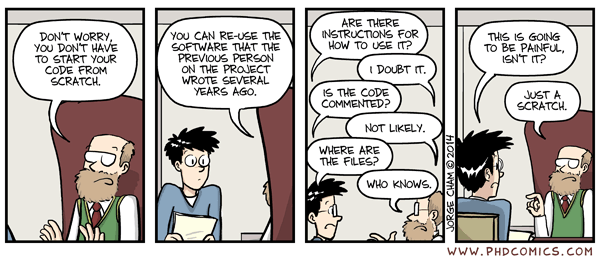
Discussion: A scary anecdote
- A group of researchers obtain great results and submit their work to a high-profile journal.
- Reviewers ask for new figures and additional analysis.
- The researchers start working on revisions and generate modified figures, but find inconsistencies with old figures.
- The researchers can’t find some of the data they used to generate the original results, and can’t figure out which parameters they used when running their analyses.
Discussion: continued …
- The manuscript is still languishing in the drawer …
What is reproducible research?
Definition
“reproducibility refers to the ability of a researcher to duplicate the results of a prior study using the same materials as were used by the original investigator. That is, a second researcher might use the same raw data to build the same analysis files and implement the same statistical analysis in an attempt to yield the same results. Reproducibility is a minimum necessary condition for a finding to be believable and informative.”
– U.S. National Science Foundation (NSF) subcommittee on replicability in science
Definition
- For any research project, an independent researcher should be able to replicate an experiment:
- the same results should be obtained under the same contitions
- it should be possible to recreate the same conditions
- “Experiment” is interpreted in a wide sense, encompassing also computational work
The Reproducibility Crisis
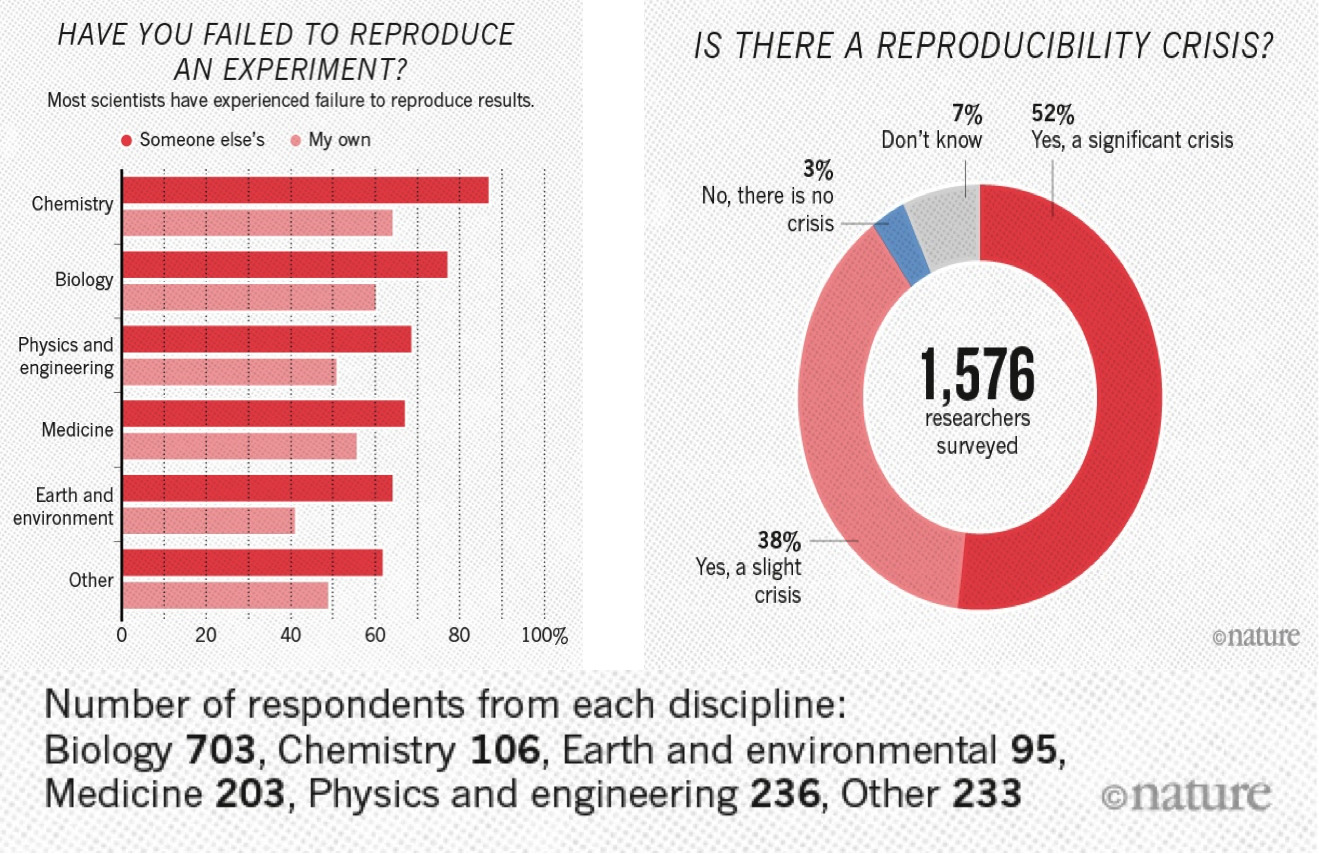
Irreproducible research: why?
- Not enough documentation on how experiment is conducted and data is generated
- Data used to generate original results unavailable
- Software used to generate original results unavailable
- Difficult to recreate software environment (libraries, versions) used to generate original results
- Difficult to rerun the computational steps
Or in short
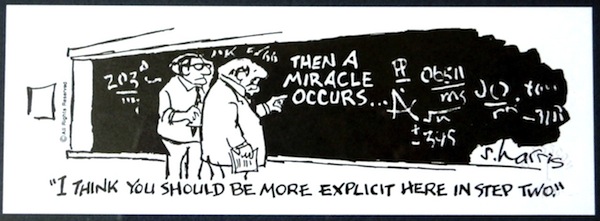
Levels of reproducibility
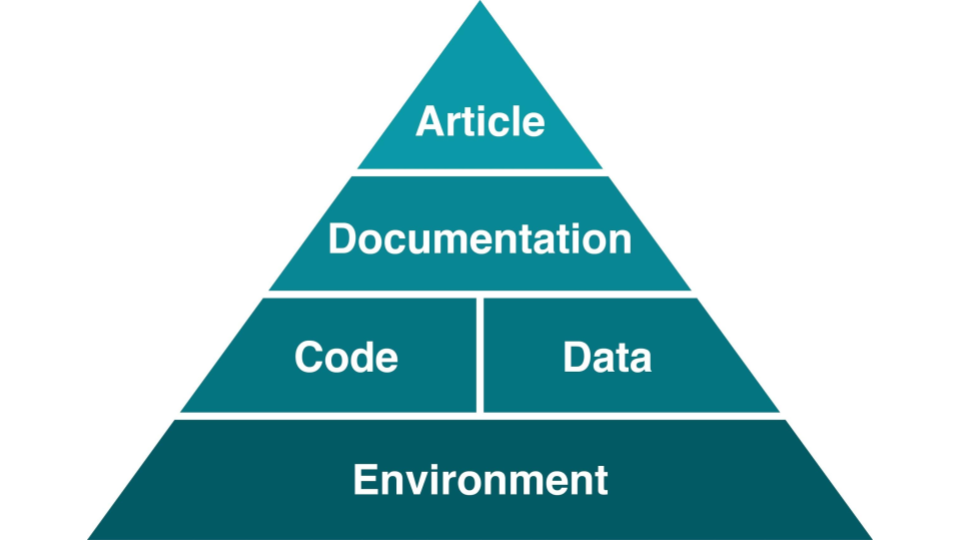
Semantics
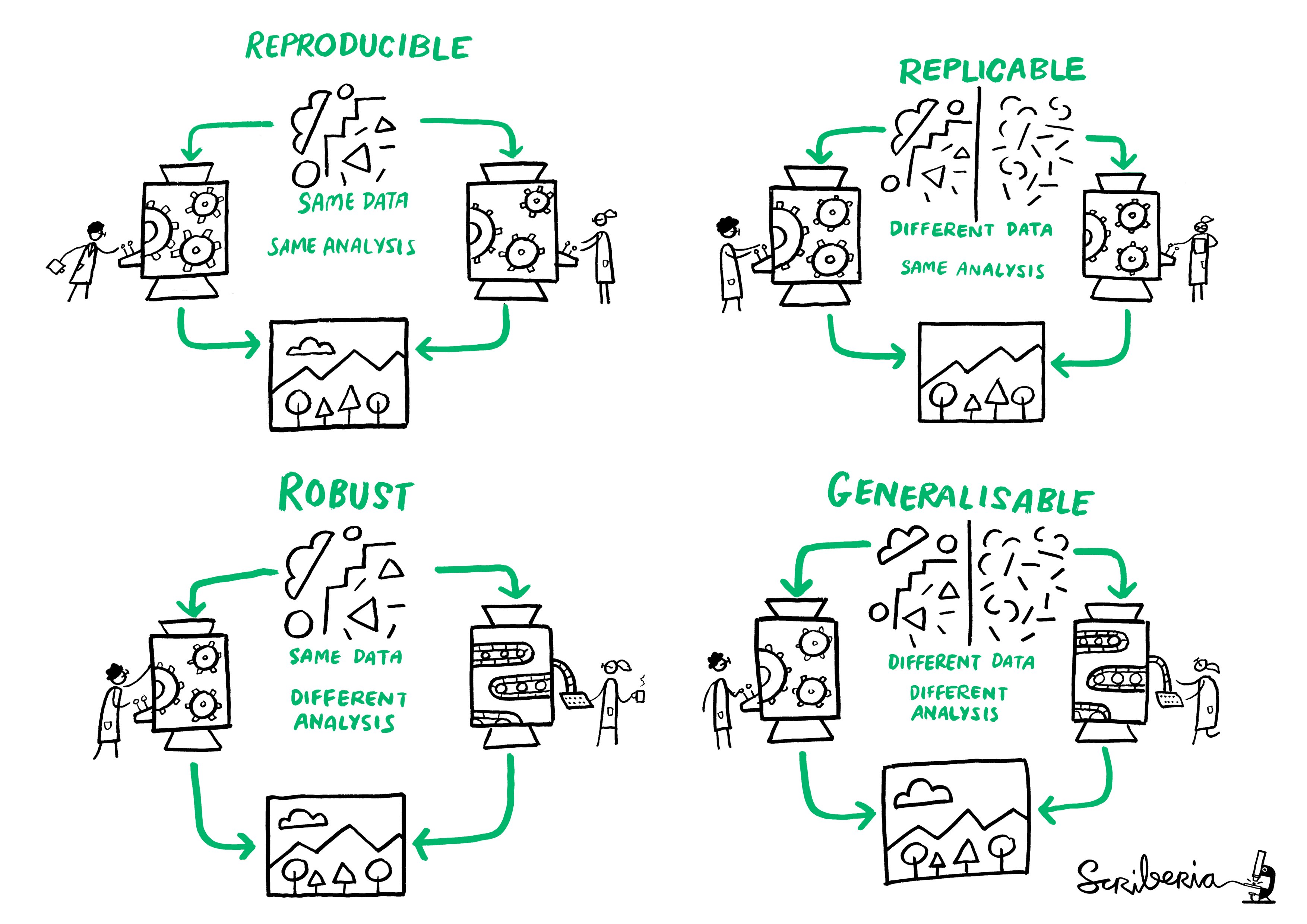
Discussion
Computer programs are expected to produce the same output for the same inputs. Is that true for research software?
Can you give some examples? What can we do about it?
Organization Projects
Lesson page
Recording Dependencies
Dependencies
- Reproducibility: We can control our code but how can we control dependencies?
- 10-year challenge: Try to build/run your own code that you have created 10 (or less) years ago. Will your code from today work in 5 years if you don’t change it?
- Dependency hell: Different codes on the same environment can have conflicting dependencies.
Dependency Hell
Lesson page
Recording Environments
Containers
- Containers can be built to bundle all the necessary ingredients (data, code, environment).
- A container provides operating-system-level virtualization, sharing the host system’s kernel with other containers.
- Popular container implementations are Docker and Singularity.
Docker
- Available for most common operating systems.
- A mechanism to “send the computer to the data” when data is too large or too sensitive to travel over network.
- DockerHub is a platform to share Docker images (stored in repositories - similar to a Git repository).
- Public Docker images available on DockerHub.
Warning
Not all images can be trusted! There have been examples of contaminated images so investigate before using images blindly. Apply same caution as installing software packages from untrusted package repositories.
Semantics
- Image is like a blueprint. It is immutable.
- Container is an instance of an image.
- Dockerfile is a recipe which creates a container based on an image and applies small changes to it.
Pros
- Allow for seamlessly moving workflows across different platforms.
- Much more lightweight than virtual machines.
- Eliminates the “works on my machine” situation.
- For software with many dependencies, in turn with its own dependencies, containers offer possibly the only way to preserve the computational experiment for future reproducibility.
Cons
- Containers can have security vulnerabilities which can be exploited.
- Can be used to hide away software installation problems and thereby discourage good software development practices.
- It may not be clear whether to record the environment in the image part or the recipe part.
Discussion: reproducibility
- Do you think containers contribute to reproducible research?
- Do you see a use case for your own work?
Recording Computational Steps
Lesson page
Code Refinery/Reproducible Research/Recording Computational Steps
Open Science
Sharing research data
The Open Science movement encourages researchers to share research output beyond the contents of a published academic article (and possibly supplementary information).
In favor
Arguments in favor (from Wikipedia):
- Open access publication of research reports and data allows for rigorous peer-review
- Science is publicly funded so all results of the research should be publicly available
- Open Science will make science more reproducible and transparent
- Open Science has more impact
- Open Science will help answer uniquely complex questions
Against
Arguments against (from Wikipedia):
- Too much unsorted information overwhelms scientists
- Potential misuse
- The public will misunderstand science data
- Increasing the scale of science will make verification of any discovery more difficult
- Low-quality science
Data cycle
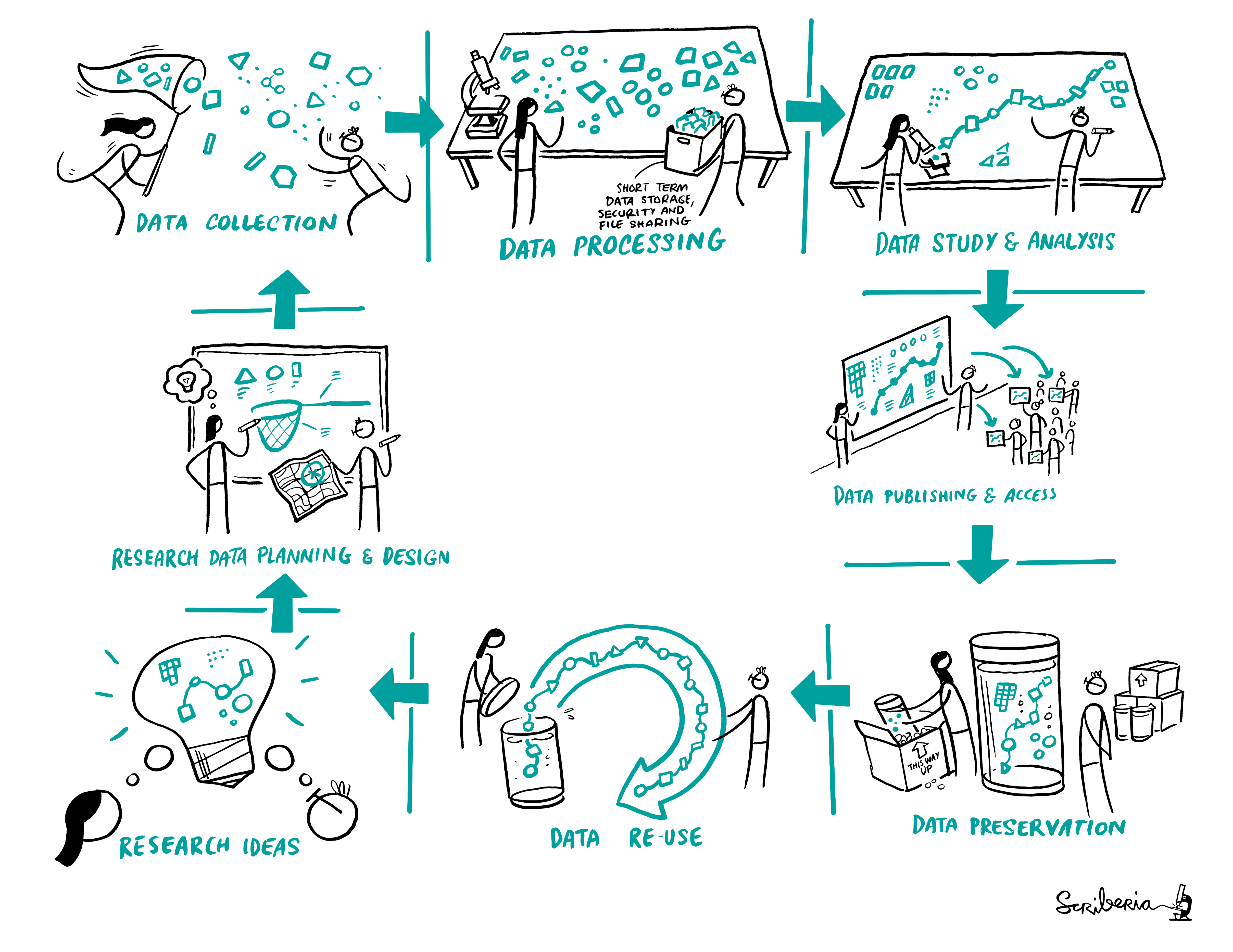
FAIR
FAIR principles
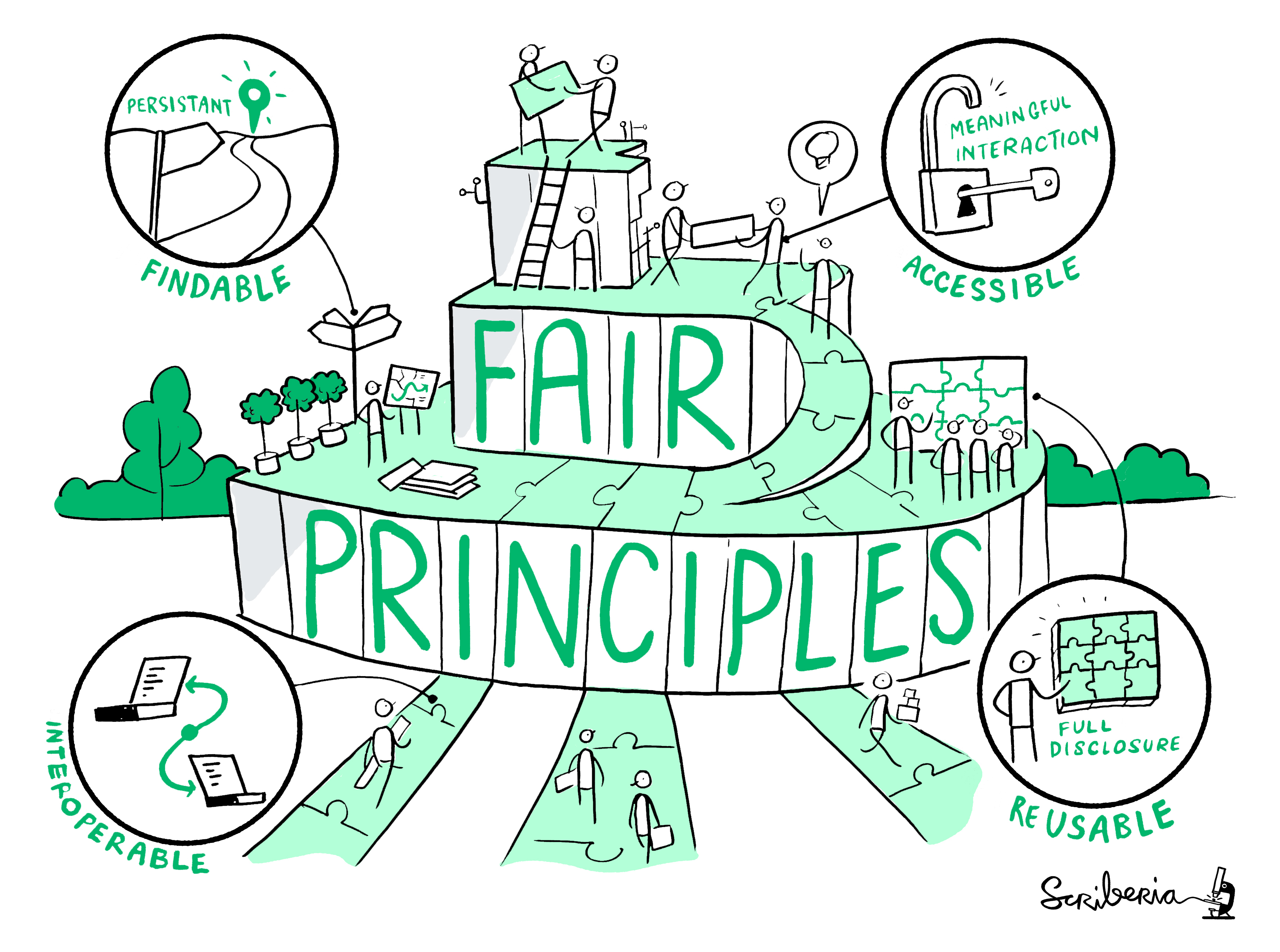
Findable
- Will anyone else know that your data exists?
- Solutions: put it in a standard repository, or at least a description of the data. Get a digital object identifier (DOI).
Accessible
- Once someone knows that the data exists, can they get it?
- Usually solved by being in a repository, but for non-open data, may require more procedures.
Interoperable
- Is your data in a format that can be used by others, like csv instead of PDF?
- Or better than csv. Example: 5-star open data
Reusable
- Is there a license allowing others to re-use?
FAIR != Open
Even though this is usually referred to as “open data”, it means considering and making good decisions, even if non-open.
Note that FAIR principles do not require data/software to be open.
FAIR Software
FAIR principles are usually discussed in the context of data, but they apply also for research software.
Discussion: Discuss open science
- Do you share any other research outputs besides published articles and possibly source code?
- Discuss pros and cons of sharing research data.
Exercise: Get a DOI at Zenodo
- Go to https://sandbox.zenodo.org/login/ and sign in with your GitHub account.
- Go to https://sandbox.zenodo.org/account/settings/github/.
- Find the repository you wish to publish, and flip the switch to ON.
- Go to GitHub and create a release.
- Add the DOI badge to your README.
